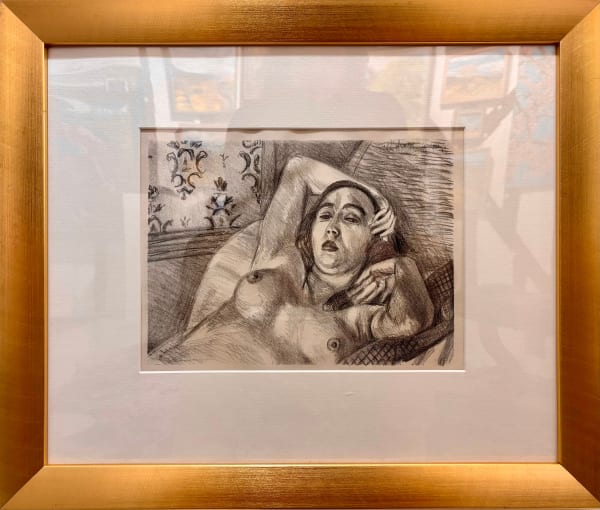Henri Matisse
Early Life and Education
Henri Matisse was born on December 31, 1869, in Le Cateau-Cambrésis, a small town in northern France. He was the eldest son of a grain merchant. Initially, Matisse studied law in Paris from 1887 to 1891 and worked as a law clerk. However, during a convalescence from appendicitis in 1890, his mother gave him art supplies to pass the time, and he discovered a passion for painting. This pivotal moment led him to abandon law and pursue a career in art.
Matisse moved to Paris in 1891 to study art formally. He attended the Académie Julian and later the École des Beaux-Arts, where he studied under the academic painter Gustave Moreau. During this time, Matisse was influenced by the works of the Old Masters, especially Chardin and Poussin, as well as contemporary artists like Manet and the Impressionists.
Early Career and Fauvism
Matisse’s early works were relatively traditional in style. However, around 1904, he began to experiment with more vibrant colors and looser brushwork, influenced by the work of Vincent van Gogh and Paul Cézanne. This experimentation led to the development of Fauvism, a movement characterized by bold, non-naturalistic colors and vigorous brushstrokes. Matisse became a leading figure of the Fauves, a group of artists that included André Derain and Maurice de Vlaminck.
The 1905 Salon d’Automne exhibition in Paris marked the public debut of Fauvism. Matisse’s painting “Woman with a Hat,” featuring his wife Amélie, was particularly controversial for its use of vivid colors and unconventional technique. Critics were shocked, with one describing the artists as “Fauves” (wild beasts), a term that became associated with the movement.
Mature Style and Major Works
After the decline of Fauvism around 1907, Matisse continued to evolve his style, incorporating elements of other modernist movements while maintaining his focus on color and composition. His work from this period includes some of his most famous paintings, such as “The Dance” (1910) and “The Red Studio” (1911). These works demonstrate Matisse’s mastery of color and his interest in the harmony and balance of forms.
In the 1920s, Matisse’s style became more refined and decorative. He spent significant time in Nice, where the Mediterranean light influenced his palette. His works from this period often feature odalisques, or reclining female figures, rendered in luxurious settings.
Cut-Outs and Later Years
In the 1940s, due to declining health, Matisse began to explore a new medium: paper cut-outs. This technique, which he called “painting with scissors,” involved cutting shapes from painted paper and arranging them into compositions. The cut-outs allowed Matisse to continue creating art despite his physical limitations and led to some of his most innovative and celebrated works, such as “The Blue Nudes” (1952) and “The Snail” (1953).
One of the most significant achievements of Matisse’s later years was the design and decoration of the Chapel of the Rosary in Vence, France, completed in 1951. Matisse considered it his masterpiece, integrating his cut-out technique into stained glass windows and murals, creating a harmonious environment of light and color.
Legacy and Influence
Henri Matisse passed away on November 3, 1954, in Nice, France, at the age of 84. His work profoundly influenced the course of modern art, shaping movements such as Abstract Expressionism and Color Field painting. Matisse’s exploration of color and form, his innovative use of materials, and his ability to distill complex subjects into simple, powerful compositions have made him one of the most revered artists of the 20th century.
Today, Matisse’s works are celebrated in major museums and collections worldwide. His legacy endures through the vibrant, joyous quality of his art, which continues to inspire and captivate audiences.

